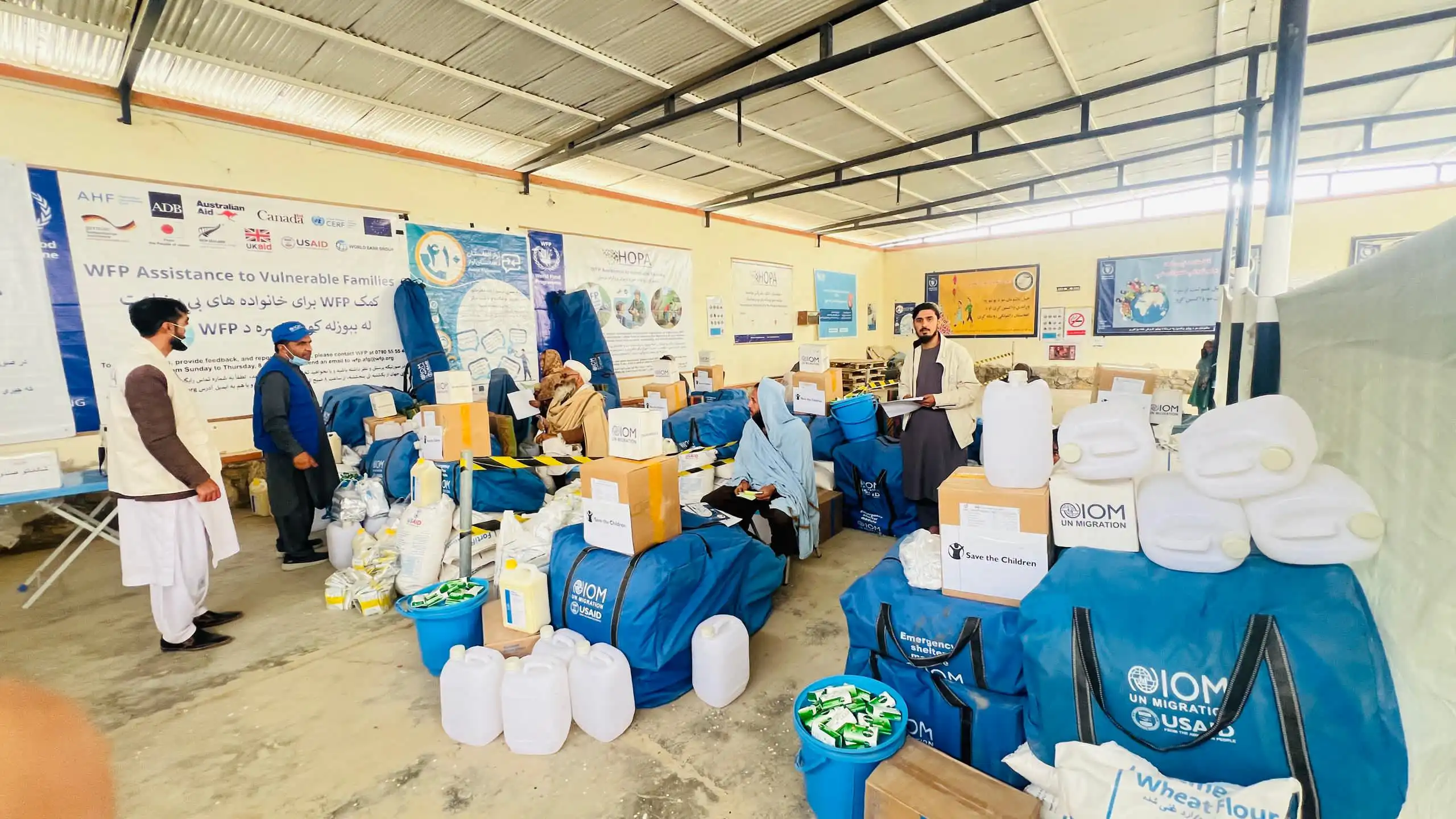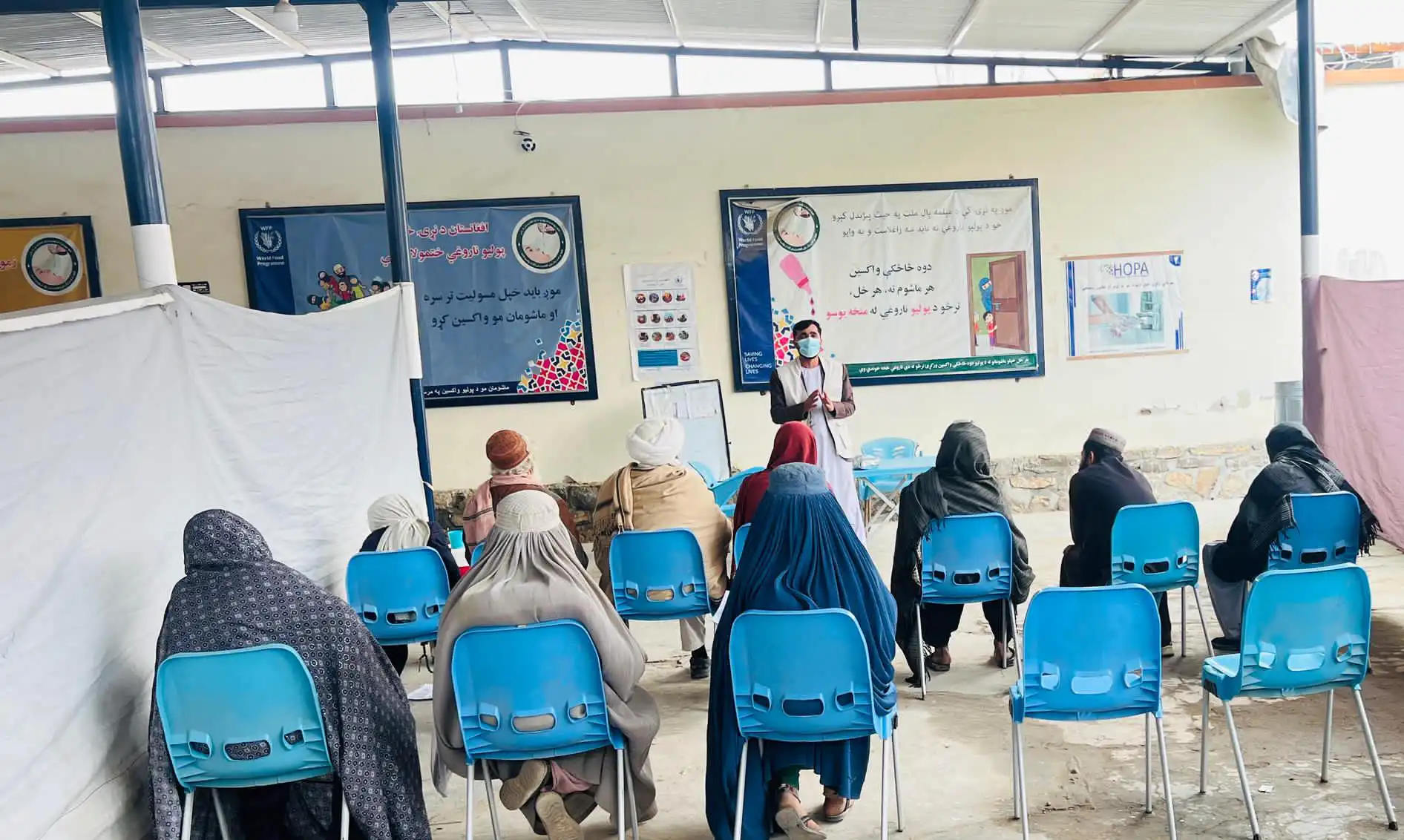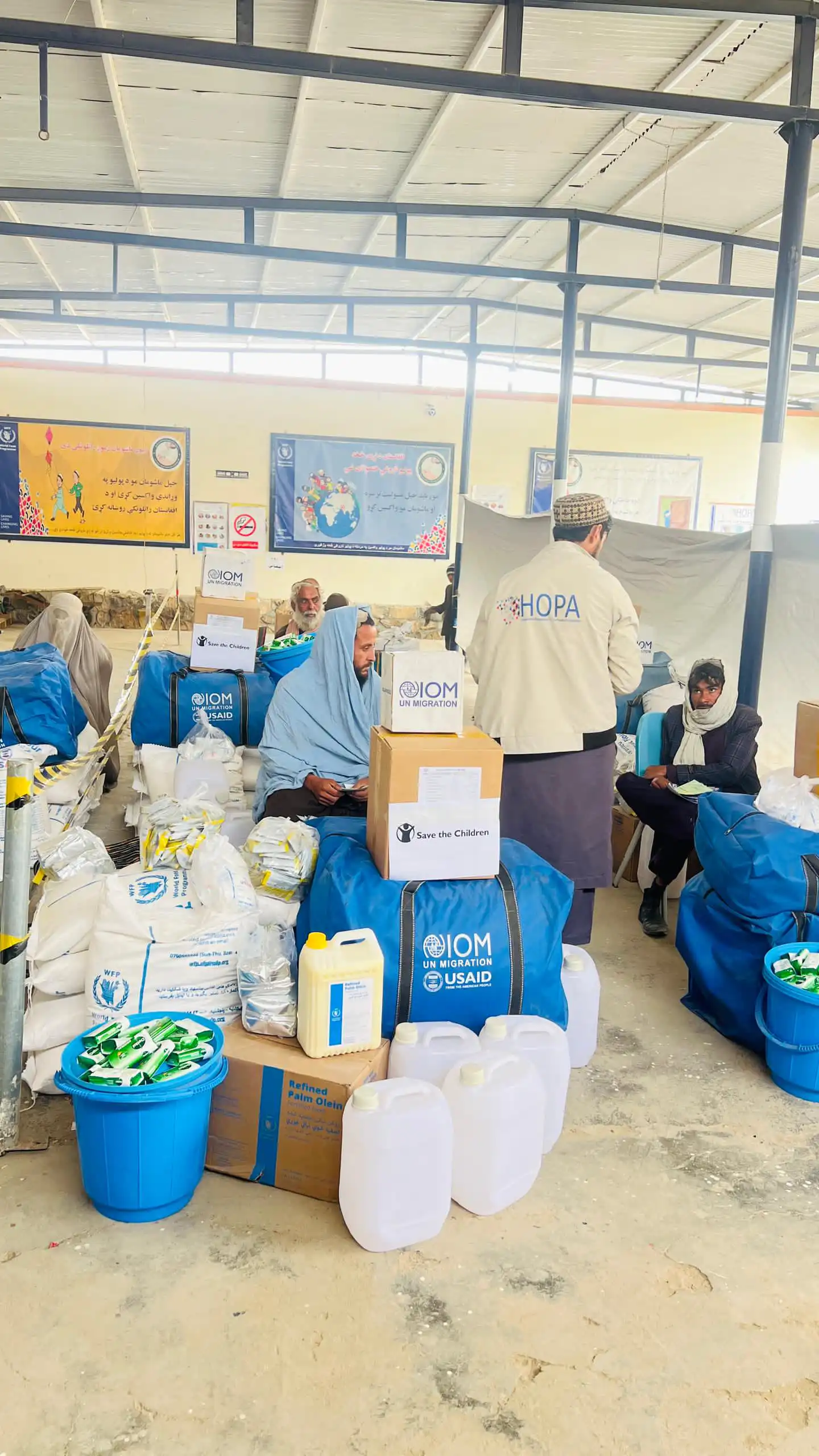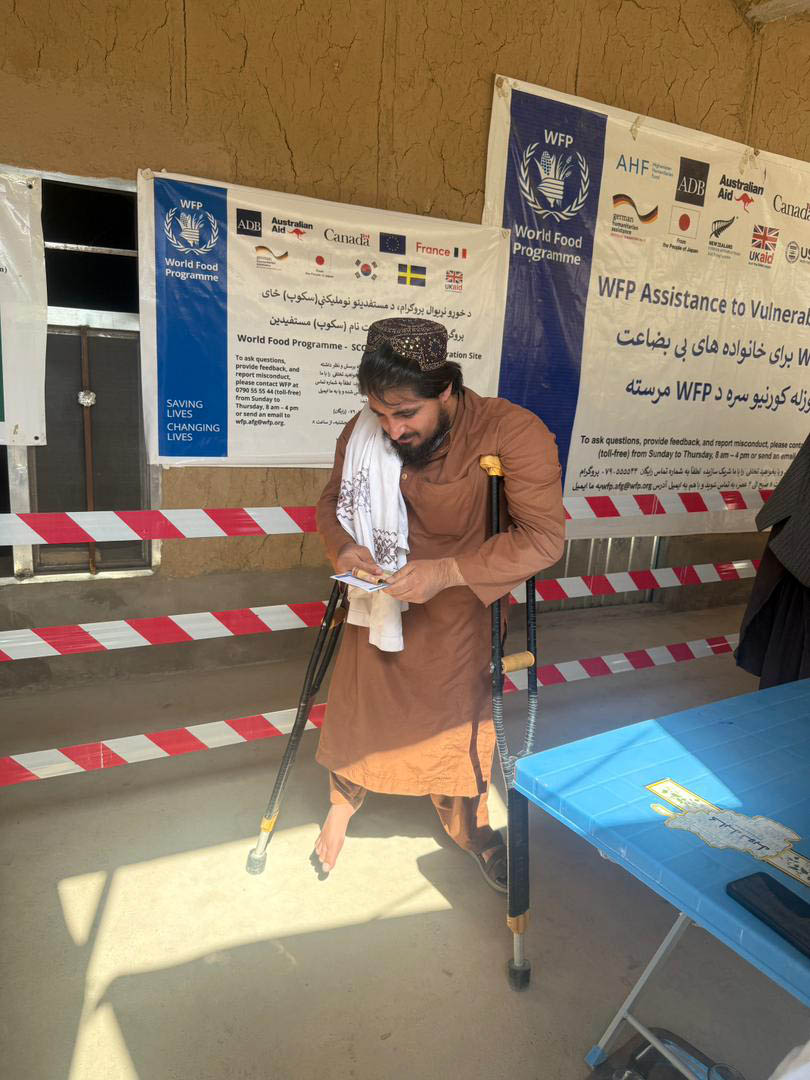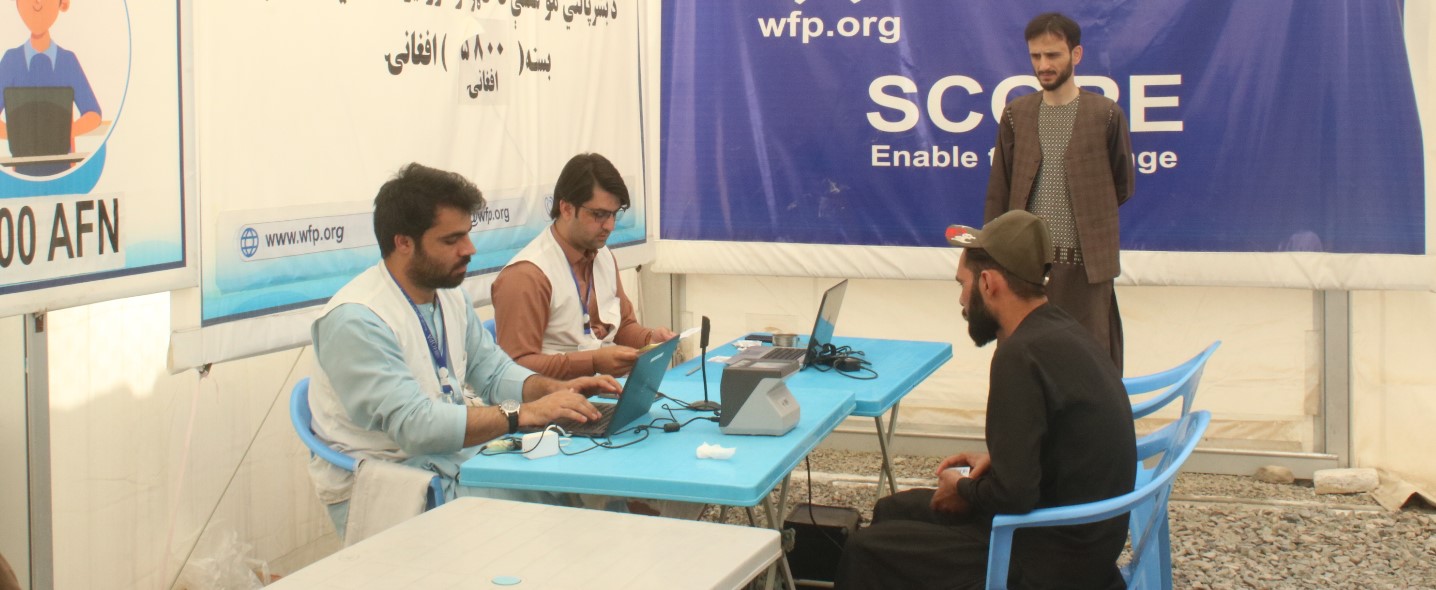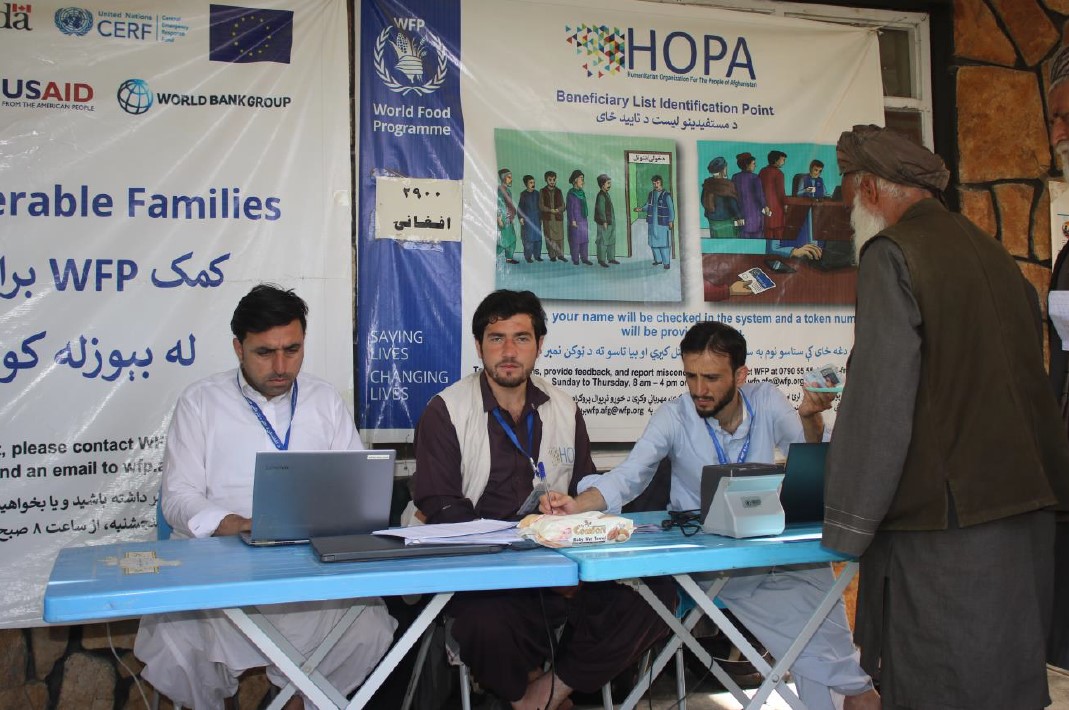
Contingency Response
1. Background
During February 2025, heavy rainfall affected several areas of Kandahar city, including PD #5, 7, 12, and the sub-districts of Spin Boldak and Arghandab. According to the initial report from the Afghanistan National Disaster Management Authority (ANDMA), a total of 18 families were affected. ANDMA reported the caseload to the Office for the Coordination of Humanitarian Affairs (OCHA), which mobilized humanitarian organizations for an emergency response.
An Operations Coordination Team (OCT) meeting was held on 12 February 2025, attended by ANDMA, OCHA, and other humanitarian organizations, where it was decided to conduct a Joint Needs Assessment (JNA). The assessment took place between 16 and 18 February 2025 and was led by IOM in the field. HOPA, along with SCI, UNHCR partners, and other organizations, actively participated in this assessment.
The assessment confirmed that out of the 18 affected families, 10 families required immediate humanitarian assistance, including Food Items (FI) and Non-Food Items (NFI).
2. Emergency Response Implementation
The joint emergency response was conducted at HOPA’s warehouse in PD #2 Karez Bazar area of Kandahar city. As part of this response, HOPA distributed food assistance to the affected families. The food distribution was carried out as follows:
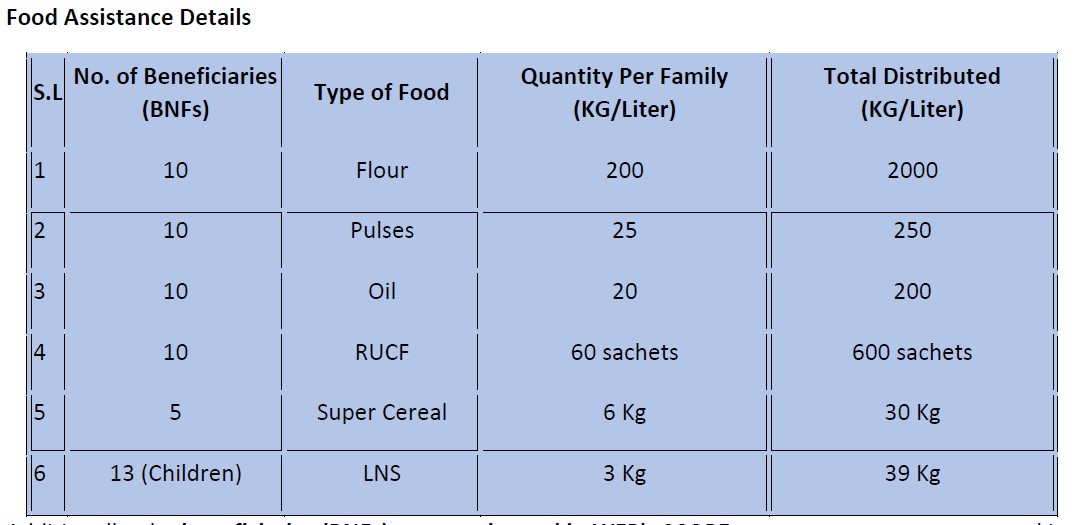
HOPA also distributed Blanket Supplementary Feeding Program (BSFP) assistance to vulnerable groups among the affected households. Specifically:
13 children received Lipid-based Nutrient Supplements (LNS) to support their nutritional needs.
5 Pregnant and Breastfeeding Women (PBW) received supplementary food to ensure maternal and child health during this critical period.
3. Challenges Encountered
Despite the successful distribution, some challenges were observed during the process:
Late arrival of beneficiaries: Some affected families arrived at the distribution site later than expected, causing delays.
Delayed assistance delivery: Certain humanitarian agencies delivered their assistance packages/kits late, which further postponed the overall distribution process.
4. Lessons Learned & Recommendations
To ensure a more efficient response in the future:
Timely Arrival of Beneficiaries: All beneficiaries will be requested to arrive at the distribution site on time.
Better Coordination Among Agencies: HOPA will enhance coordination with humanitarian agencies to ensure all assistance packages are delivered on schedule, avoiding delays in the distribution process.
Improved Communication Channels: Setting up a real-time communication mechanism among agencies and beneficiaries to facilitate timely updates on distribution schedules.
5. Accountability to Affected Populations (AAP) & Protection Measures
HOPA remains committed to ensuring that all humanitarian assistance is delivered in a manner that respects the dignity, safety, and rights of beneficiaries. To uphold this commitment:
Community Engagement & Feedback Mechanisms: Beneficiaries were informed about the distribution process, eligibility criteria, and available assistance. A feedback mechanism was established to address any concerns or grievances.
Safe & Dignified Distribution: The distribution site was organized to ensure a safe and orderly process, with priority given to vulnerable groups such as women-headed households, the elderly, and persons with disabilities.
Protection Considerations: Special efforts were made to safeguard beneficiaries, particularly women and children, from potential risks, including crowding and security concerns at the distribution site.
Gender Sensitivity & Inclusion: The assistance process was conducted in a gender-sensitive manner, ensuring that both men and women had equal access to food assistance without discrimination.
6. Impact of Assistance
The food assistance provided under this emergency response will significantly support the affected families, ensuring they have essential food supplies during this difficult period. This intervention is particularly crucial for vulnerable children who have been severely impacted by the heavy rainfall and subsequent hardships.
The supplementary feeding program will further help protect children and pregnant/breastfeeding women from malnutrition, supporting long-term resilience and health.
HOPA remains committed to responding effectively to emergencies and strengthening coordination with humanitarian partners for future interventions.
7. Supporting Evidence
